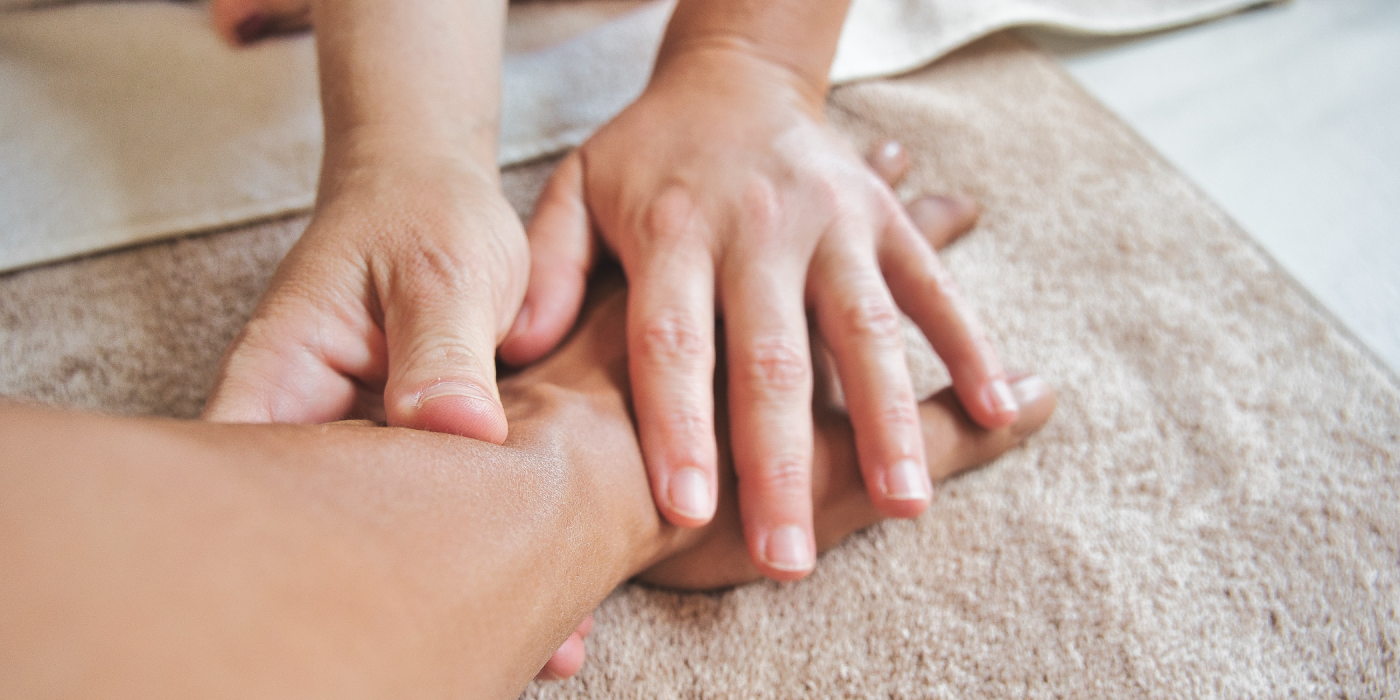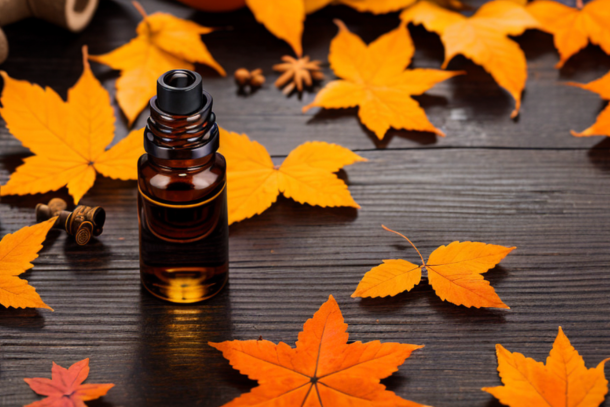Lymphatic Drainage Massage: stimulate lymphatic system and aid in detoxification

Lymphatic Drainage Massage (LDM) is a specialized massage technique applied with light pressure in specific directions to stimulate the flow of lymph fluids in the body. This gentle, rhythmic massage primarily focuses on specific lymph nodes and points of the body, as well as the natural flow of the lymphatic system.
The Lymphatic System: A Brief Overview
The lymphatic system plays a critical role in your body's ability to heal from injury and ward off disease. It's primarily composed of a network of lymphatic vessels that carry a clear, watery fluid called lymph. This fluid is crucial as it carries essential nutrients to cells and removes waste products.
Key Components of the Lymphatic System
The lymphatic system is composed of:
- Lymph: a fluid that contains white blood cells that defend against germs.
- Lymph vessels: a network of channels throughout the body that carries lymph.
- Lymph nodes: small structures that filter substances in the lymph.
Importance of the Lymphatic System in Detoxification
The lymphatic system is an essential part of your immune and circulatory systems. When working properly, it effectively detoxifies the body and transports waste products from the cellular level into the bloodstream. This process is crucial for the body's detoxification and contributes significantly to maintaining a robust immune system. Through Lymphatic Drainage Massage, the lymphatic system is stimulated to work more efficiently, enhancing its capacity to remove toxins and wastes, hence promoting better overall health.
Understanding the Lymphatic System
Detailed Explanation of the Lymphatic System
The lymphatic system is a network of tissues and organs that help rid the body of toxins and waste. It is composed of lymphatic vessels, lymph nodes, and lymph, a fluid that contains white blood cells that defend against germs.
Lymphatic Vessels and Nodes
Lymphatic vessels, which are spread throughout the body similar to blood vessels, carry lymph fluid. Lymph nodes are small, bean-shaped structures that produce and store cells that fight infection and disease.
Role of the Lymphatic System in the Body
The primary functions of the lymphatic system are to maintain the body's fluid balance, absorb fats from the digestive tract, and defend the body against infection. It works as a filtration system that keeps your body's internal environment clean and healthy.
Fluid Balance and Immune Response
The lymphatic system plays a vital role in maintaining fluid balance in the body and contributes to immune responses. It transports excess fluid from tissues, absorbs lipids from the intestine, transports them to the blood, and serves as a site for interaction between the blood, lymph, and immune cells.
How the Lymphatic System Aids in Detoxification
The lymphatic system helps detoxify the body by removing unwanted substances. It does this by filtering foreign particles and wastes from the lymph fluid before returning it to the bloodstream.
Detoxification Process
During the detoxification process, harmful substances are trapped in the lymph nodes where they are neutralized by white blood cells. Thus, a well-functioning lymphatic system supports overall health by detoxifying the body, supporting the immune system, and maintaining fluid balance.
What is Lymphatic Drainage Massage?
History and Origins of Lymphatic Drainage Massage
Lymphatic Drainage Massage (LDM) is a specialized massage technique that has its roots in the early 1930s. Developed by Danish husband-and-wife duo Dr. Emil and Estrid Vodder, it was initially used to treat chronic sinusitis and other immune disorders. Over time, the benefits of this gentle massage technique have become more widely recognized, making it a popular choice for individuals seeking holistic ways to maintain health and wellbeing.
Description of the Lymphatic Drainage Massage Technique
The technique of LDM is characterized by light, rhythmic strokes that follow the path of the lymphatic system. It aims to stimulate the lymph nodes, which are tiny, bean-shaped structures responsible for filtering lymph fluid. Using their hands, therapists apply mild, circular movements to mobilize the fluid towards the lymph nodes. It is a gentle procedure, unlike other forms of massage that apply deeper pressure.
The Massage Procedure
- Start: The session typically starts at the neck where the highest concentration of lymph nodes is found.
- Procedure: Gentle, circular strokes are used to stimulate the lymphatic flow, moving down the body.
- End: The massage usually concludes with the lower extremities, encouraging lymph fluid to flow back towards the heart.
The Goal and Benefits of Lymphatic Drainage Massage
The primary goal of LDM is to stimulate the lymphatic system, which plays a crucial role in body detoxification and immunity. By enhancing the flow of lymph fluid, toxins are more effectively removed from body tissues. This form of massage is also known to alleviate swelling, improve skin health, aid relaxation, and support overall wellbeing.
The Procedure of Lymphatic Drainage Massage
Preparing for a Lymphatic Drainage Massage
Before booking a lymphatic drainage massage, it's important to hydrate adequately as this aids in the movement of lymph fluids. Try to avoid large meals or alcohol prior to your session, and wear loose, comfortable clothing for your appointment.
On the day:
- Arrive early to your appointment to allow time to relax and discuss any health concerns with your therapist.
Step-by-step Guide to the Process of Lymphatic Drainage Massage
A lymphatic drainage massage typically starts with the therapist using light, rhythmic strokes on the surface of the skin in the direction of lymph flow. This is to stimulate the lymph vessels just below the skin.
During the massage:
- You'll be lying comfortably on a massage table.
- The therapist will apply light pressure and rhythmic circular movements to stimulate lymph flow.
- The treatment usually starts at the neck, followed by other areas of the body as needed.
This light, repetitive technique is designed to encourage the movement of lymph fluids around the body and help in detoxification.
Post-massage Care and Routines
After the massage, continue drinking plenty of water to aid in flushing toxins from the body. Avoid strenuous exercise and alcohol for the rest of the day.
Post-massage tips:
- Rest and relax to allow your body to detoxify and heal.
- Pay attention to any changes in your body and report any concerns to your therapist.
Remember, every individual’s response to lymphatic drainage massage is different, so it's important to listen to your body's cues.
Health Benefits of Lymphatic Drainage Massage
Detailed Benefits for Detoxification
Lymphatic Drainage Massage has been recognized for its potent detoxification benefits. It helps in eliminating waste, toxins, and harmful substances from the body, thereby promoting detoxification. By stimulating the lymphatic system, this gentle massage accelerates the rate at which lymph fluid circulates, thereby speeding up the elimination of waste products.
Detoxification and Cellular Health
Research suggests that efficient lymphatic function aids in cellular health by removing cellular waste products that accumulate during metabolic processes.
Benefits for Immune System and Overall Health
Lymphatic Drainage Massage is also beneficial for immune system enhancement. Improving lymph circulation facilitates the removal of harmful pathogens and helps the body to fight infections more effectively. Additionally, this type of massage may contribute to overall health by reducing oedema, improving skin tone, and promoting relaxation and stress relief.
Overall Health Enhancement
Improved lymphatic circulation is linked to better health outcomes, including improved energy levels, enhanced body function, and better sleep quality.
Clinical Studies Supporting Lymphatic Drainage Massage
There is a growing body of clinical studies that support the benefits of Lymphatic Drainage Massage. For example, a study published in the Journal of Manual and Manipulative Therapy found that lymphatic drainage massage could significantly reduce oedema in postoperative patients. Another study in the Journal of Physiological Sciences showed that lymphatic drainage could enhance immune function by increasing the production of lymphocytes, the body's primary defence mechanism.
Emerging Research
Emerging research in this field points to additional benefits, such as potential relief from chronic conditions like fibromyalgia and lymphedema. However, more studies are needed to fully understand these potential benefits.
Who Can Benefit from Lymphatic Drainage Massage?
Ideal Candidates for Lymphatic Drainage Massage
Most people can safely receive a lymphatic drainage massage. The ideal candidates include those who lead sedentary lifestyles, individuals with chronic fatigue, people suffering from stress or insomnia, and those who frequently get colds or infections. Moreover, post-surgery or post-injury patients can benefit from it as it helps reduce swelling and improves healing. Athletes often use lymphatic massage to help them recover faster and maintain optimal performance.
Precautions and Contraindications
While lymphatic drainage massage is generally safe, certain conditions could pose a risk. People with congestive heart failure, kidney problems, infections, blood clots, or certain types of cancer should avoid this type of massage. Moreover, if you're feeling unwell or have a high fever, it's better to postpone the treatment.
When to Consult a Healthcare Provider
Before embarking on any new treatment plan, including lymphatic drainage massage, it's crucial to consult a healthcare provider. This is especially important for individuals with a history of medical conditions or ongoing health problems. Your healthcare provider will be able to assess your health status and advise whether this type of massage would be safe and beneficial for you. They can also provide guidance on finding a qualified therapist.
How to Find a Qualified Lymphatic Drainage Massage Therapist
Necessary Qualifications and Training for Therapists
When seeking a lymphatic drainage massage therapist, it's crucial to ensure they possess the necessary qualifications and training. They should have completed a certified course in lymphatic drainage massage. Often, these therapists are also registered physical therapists, nurses, or massage therapists with additional specialized training. Always ask to see their certification or registration.
Tips for Finding a Certified Lymphatic Drainage Massage Therapist
Here are some useful tips to find a certified lymphatic drainage massage therapist:
- Recommendations: Personal referrals are often reliable. Speak to friends, family, or medical professionals who might recommend trusted therapists.
- Online Research: Explore online platforms and websites for reviews and ratings. Platforms like Yelp, Google Reviews, and health forums can be helpful.
- Professional Associations: Contact professional associations related to lymphatic therapy. They can provide directories of certified practitioners.
Questions to Ask a Potential Therapist
Before finalizing your therapist, it's good to have a conversation with them. Here are a few questions to ask:
- Could you tell me about your training and experience in lymphatic drainage massage?
- How many lymphatic drainage massage sessions have you performed?
- What can I expect during and after the massage session?
- Are there any precautions or special considerations I need to take?
The right therapist will be patient and transparent, ensuring you feel comfortable before proceeding with a lymphatic drainage massage session.
Conclusion
A. Recap of Lymphatic Drainage Massage
In essence, the lymphatic drainage massage is a specialized massage technique that stimulates the lymphatic system, helping your body to naturally detoxify. It's a light-pressure massage that not only encourages the natural drainage of the lymph but also enhances your overall health by strengthening your immune system.
B. Encouragement for Lymphatic Drainage Massage
If you're looking to explore ways to improve your health and wellness, lymphatic drainage massage may be an excellent addition to your routine. Whether you aim for detoxification, managing health conditions, or simply for relaxation and stress reduction, this therapeutic approach could offer profound benefits. It is, however, crucial to remember that while the benefits are significant, individual experiences may vary.
Considerations
Before rushing out to book a session, take time to consider your health status, needs, and wellness goals. As a potential client, understanding the procedure, benefits, and contraindications can empower you to make the most informed decision.
C. Seek Professional Advice
In conclusion, it is important that you seek advice from a healthcare professional or a certified lymphatic drainage massage therapist before scheduling a session. This ensures your safety and can help customize the treatment to your specific needs. A qualified therapist can offer insights on what to expect, how to prepare, and how to enhance the benefits of your lymphatic drainage massage.
Final Note
It's your body and your health journey, make it count by seeking the best advice and making informed decisions. Explore the world of lymphatic drainage massage and experience the potential benefits it can offer. Remember, your wellness is worth the investment.
Related to this article are the following:
- Drink water to lose weight and when to drink water to lose weight
- Is mineral water good for you? Mineral Water vs. Seltzer vs. Sparkling Water
- How to Make Hummus: A Nutritious Delight with a Few Surprising Facts
- Massage Slippers: A Journey from Obscurity to Fashionable Wellness Accessory
- The Comprehensive Guide to Vitamin A: Importance, Sources, and Health Benefits
I do hope you have enjoyed this article and hope that you will subscribe to my newsletter so you can get the latest information about all things naturally relaxing.
Stay in touch, join the Naturally Relaxing Newsletter
Newsletter Signup
Post Your Comments
or post as a guest
Be the first to comment.
Latest articles in Relaxation

Capturing the Perfect Sunset: Tips and Techniques

The Benefits of Aromatherapy: Essential Oils for Relaxation

Embracing Calm: Innovative Ways to Relax in the New Year

Autumn Aromatherapy: Essential Oils for Relaxation

Embracing Autumn's Tranquillity: Finding Peace in the UK's Golden Season






